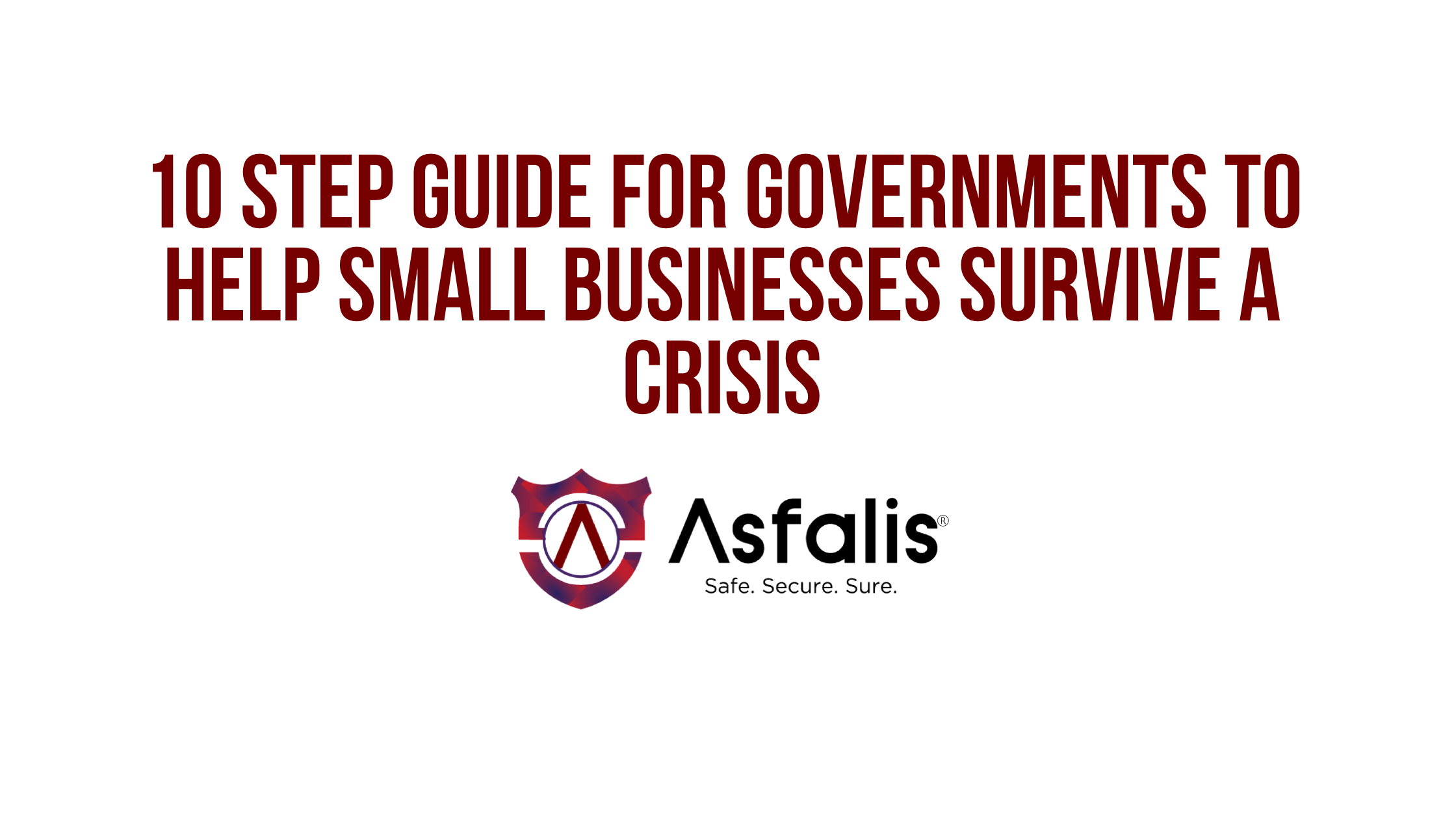To say state and local governments have been overwhelmed with the onset of the COVID-19 and economic crisis and the long-term impacts of it, is an understatement. The response to reopen the United States in phases has created additional challenges with the pandemic recovery efforts, and people’s lives are at stake.
As the federal government disburses trillions of dollars in recovery funding to provide some relief for families and businesses, local governments need to make proper investments with the resources. Many civic leaders are asking questions to help their business community: What resources do business owners need? How many businesses are prepared for another crisis? How can business owners keep their employees safe? How long can small businesses survive in the current climate? What do businesses really need to make it to the other side of this crisis?
The reality is, when businesses don’t generate sales or create jobs, governments don’t make money from tax revenue. If local governments struggle to make money, how does that impact the viability of our local communities? To help civic leaders, economic developers, and those responsible for small businesses at the local level, here is a 10-step guide and checklist for governments to help small businesses survive a crisis.
These steps are a collective of my experiences drawn from government; working directly with business leaders of small, medium and large businesses; and my subject matter expertise in crisis management and business continuity. The following steps are provided as a guide and are not in any particular order.
1. Provide funding.
COVID-19 revealed a lot of truths about our global economy, one major concern is that the average small business has 27 days of cash in reserve, according to JPMorgan Chase Institute. Government loans, to include the Paycheck Protection Program and the Economic Injury Disaster Loan, as well as private sector grants have helped small businesses keep the lights on for the time being and hopefully pay their workforce. While cash solves a lot of problems, loans and grants do not replace sales, and it’s unsustainable. Every business community has varying needs. Businesses with revenues between $100k, $500k, $1M, or $10M+ have different mindsets and needs. While governments have been able to provide businesses with emergency funding, civic leaders also have to consider how to leverage their resources to help business owners recover from disruption. The proven way to accomplish a quick recovery is resiliency training, mentioned in step # 7.
2. Provide fundamentals to lead in crisis.
Similar to how governments and corporations should be investing their time and resources into preparedness efforts so they can lead and manage a crisis effectively, small businesses need the same access to resources. As a small business owner and crisis management expert with experience training governments and corporations, crisis experience is what businesses need. Over the past seven months, businesses have recognized the importance of making tough business decisions and cutting overhead expenses to survive. The fundamentals to lead in crisis go back to mindset and the needs of a business as mentioned in step 1, based upon where they are in their business lifecycle. As you invest in resources to help your business community, provide them with the training or exposure to further develop their soft skills to lead in crisis.
3. Reinforce the 80/20 rule.
The Pareto Principle, also known as the 80/20 rule, was named after economist Vilfredo Pareto. The principle specifies that 80% of consequences come from 20% of the causes. In other words, 80% of the output comes from 20% of the input. You can also apply the 80/20 rule to crisis management. 80% of a crisis is communications and 20% is strategy. If you spend 20% of your time partnering with crisis experts to help businesses develop a crisis strategy, economic developers will receive 80% of the output. Many civic leaders do not have internal capacity for additional initiatives, financial resources are limited, and time is all you have. As you consider appropriate programs and resources for your business community, focus on the 20% that will bring your community 80% of the results.
4. Facilitate an environment for business owners to reinvent their business model.
One of a few top concerns I am hearing from governments is they do not know how to help businesses pivot their business model. While grants and loans are helpful to keep the lights on and provide hope to businesses, they do not replace revenue. COVID-19 has changed what consumers want, how consumers buy, where they buy, and who they purchase products and services from. Small business owners need to adjust their model to the needs of their customer. The Road to Resilience™ training program was designed by Asfalis, to provide the tools to help businesses pivot their business models to manage change consistently. The business model canvas, initially proposed by Alexander Osterwalder in 2005, contains nine “building blocks” to help businesses to rethink about their infrastructure, offerings, customers and finances. Governments need to invest in resiliency training that applies innovation and design thinking principles, to provide leaders with a framework for addressing complex challenges and making the best possible decisions.
5. Recognize crisis response requires people.
The skillsets needed to identify a problem and create a solution people are willing to pay for in the marketplace, is different than leading and managing people in a crisis. Governments have to identify opportunities to help businesses develop and strengthen their leadership skills in times of crisis. I’ve published the principles of Crisis Leadership on the Business Resilience DECODED podcast, as people need leaders in times of crisis. Research data shows leadership is one of the top issues that are repeatedly identified in every crisis. Typically, that stems from being uncoordinated, unclear, and making decisions in a vacuum which leads to failed communications and an inability to lead people in crisis in your community. Government leaders need to invest in training programs that foster crisis leadership to prevent a continuity of leadership crisis.
6. Invest resources in processes and procedures.
Civic leaders often ask me, how to build programs that add value to business owners. When I think about small to mid-size businesses, often their processes and infrastructure are underdeveloped, which ultimately impacts the time and efficiency of your business community. To help businesses survive and thrive through a crisis, they need to have documented processes for how the business operates. The crisis playbook must also be documented to ensure the organization knows what to do, how to do it, and who is doing what to respond and recover from disruption. Without documented processes and procedures businesses run the risk of “winging it” and reduce the opportunity of growing companies to their full potential, which ultimately impacts the economic viability of our communities.
7. Invest in small business resiliency training.
One of the greatest returns on investment government leaders can receive, comes from an invest in training to help business owners learn how to effectively manage a crisis. Similar to how enterprise corporations and governments have crisis management teams, documented playbooks, and ongoing training and development to strengthen crisis competencies, business owners need the same resources. Often times business owners do not know how to make crisis management and business continuity actionable, therefore, governments need to invest in training like The Road to Resilience™ designed for small to mid-size businesses, by crisis management experts.
8. Design for learning.
People often approach learning as something that can happen in a two-hour workshop and then wonder why 6 months to 1 year down the road the learning is not applied. As civic leaders design for learning to actually occur for programs and initiatives that you invest in. Design programs with your business community and not for them. When it comes to equipping your business community with the resources they need to recover from disruption, business owners need the knowledge, skills and behavior to be effective in crisis.
9. Understand time is value.
Time is all we have. If you ask business owners to invest their time it needs to be of value. Ensure the programming you invest in is high quality and it takes into account the needs of the business holistically. This is why it is important to design programming with subject matter experts and business owners. As an entrepreneur, I’ve seen corporate business professionals tapped to design training for entrepreneurs and felt like my time was completely wasted. Entrepreneurs understand entrepreneurs, not corporate or government employees who have never started and ran a successful business.
10. Bring small businesses to the table.
How many business round tables or task forces have been created in your community? How many of those are full of corporate executives who are making decisions about the business community? Small businesses employ more people than large corporations, therefore, diversify your stakeholders and bring small businesses to the table. It’s also important to have representation of international and immigrant owned businesses, minority businesses owners, LGBTQIA+, and diverse perspectives. A white male business owner leading a technology company will have different perspectives and needs than a Hispanic female that identifies with LGBTQIA+. Once you include diverse representation at the table, listen to them, and act.
These 10-steps can help any civic and economic development leader to be effective and get the most return on any investment you make with recovery resources. Viable communities need a strong economy. Download the 10-Step Guide for Governments checklist to evaluate how your community is investing in resources to truly help businesses recover as quickly as possible.
Contact us to speak with Vanessa Mathews and the Asfalis Advisors about helping your business community recover.




